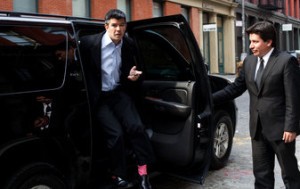 The sharing economy offers entrepreneurs a great way to start making some extra money and dip a toe in the water before going full tilt into a new venture. For those of you who are not familiar with the term, the sharing economy refers to businesses where you are paid to share your car (Uber/Lift), home (Airbnb) or other asset.
The sharing economy offers entrepreneurs a great way to start making some extra money and dip a toe in the water before going full tilt into a new venture. For those of you who are not familiar with the term, the sharing economy refers to businesses where you are paid to share your car (Uber/Lift), home (Airbnb) or other asset.
We’ll take a look at Uber as an example here. Start up is simple with these companies and the initial investment can be minimal. You do need to make sure your car or home is up to the company’s standards and that you are mentally prepared for having strangers in your car. Remember your fares can include drunks, criminals and out of control teenagers in addition to the business people and tourists you’re hoping for.
Before jumping in, you need to your research and find out what the market is like. As in any other business, you need to make sure there are enough customers to justify your work. (In London many drivers have complained that there aren’t enough Uber fares to cover the cost of their car.)
Other than that here are some pros and cons for Uber
Pros
- Ultimate flexibility
An Uber driver can work as much or as little as they want. The phone/application can be turned on at any time to work and turned off just as eaily. Thus the driver creates their own schedule on the fly.
- No boss overseeing
Although there is a manager for the drivers and sometimes they do give suggestions or pass on critique, for the most part there is no boss saying what to do and when. A driver is on their own prerogative to go where they please when they please. A drivers boss at times can be more the passengers. A driver has to maintain a 4.5 or above rating to not be cut from driving. While riders can get bossy at times, the good thing is it’s not long before they are dropped off. The driver rates the passengers as well.
- Surge Pricing
Although getting a surge ride (an exponentially increased fare) can be elusive, it can also be lucrative. Especially for big events and holidays; Surge can make the riders fare relatively expensive and the drivers shift a lot more productive for the paycheck. Drivers get 80% of the fare, regardless of the price.
- Down time
Often times there is down time while waiting for a passenger to request a ride. While on-call, the driver can spend the time as they please. This time factors into the hourly earnings performance, but it’s not hard work waiting for a phone to beep.
Cons
- Work/fares can be slow when you want them to be busy
There can be times when a driver wants to be taking fares and making money but the requets are low or there are too many drivers compared to passengers. It can be frustrating to want to work and be on-call but not be getting any. - No tips
This driving is one of the few service jobs that doesn’t allow tips. - An ineffective rating system
Customers rate a driver 1 to 5 stars, and unfortunately for drivers, a 4 star average is failing and being terminated. - Little recognition from the management/boss
The higher ups at Uber don’t do much to recognize good performance of their drivers. You either are doing fine, or you are getting cut. In addition an individual drivers opinion or request can be very minute to the management. - Wear and tear on car
Drivers are responsible for all car expenses. This can add up to significant added depreciation and maintenance/repairs on a vehicle.


Connect With Us